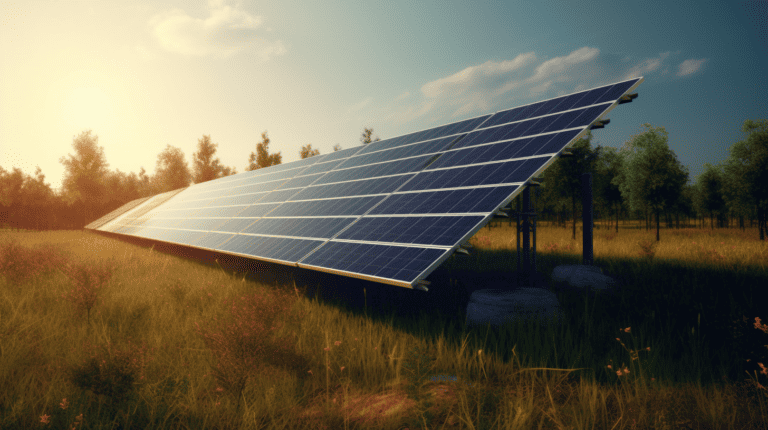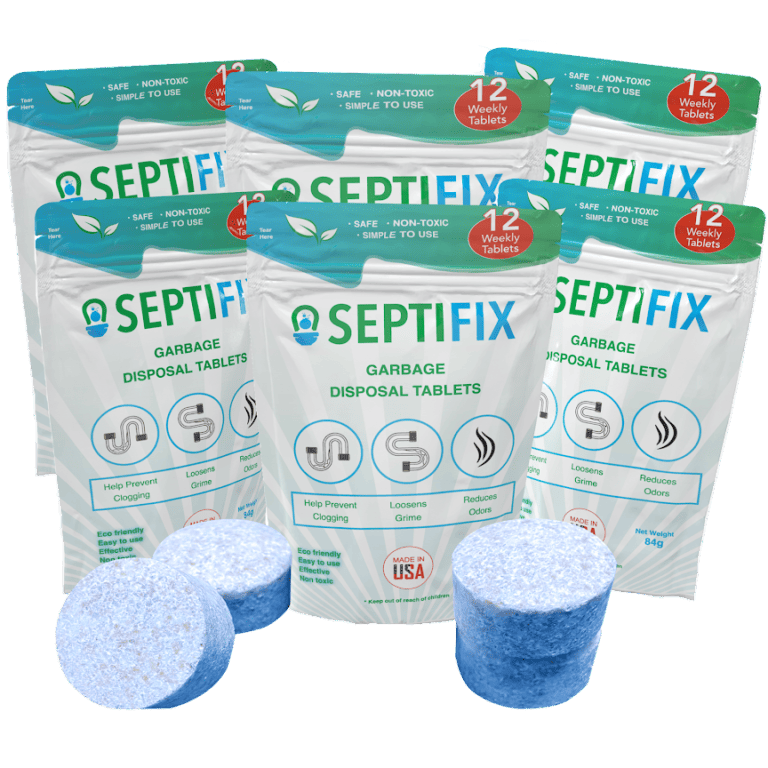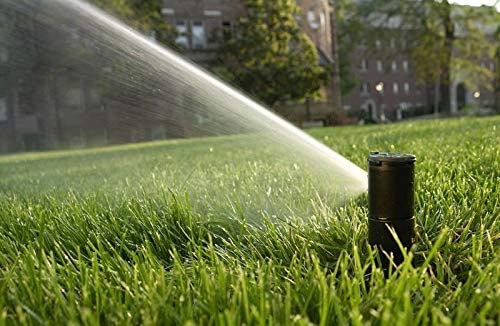How to Live in an Eco Friendly Home
Hey there, future eco-warrior! Today, we will talk about something dear to my heart and hopefully yours, too – living in a eco-friendly home. Living green isn’t just a trendy buzzword; it’s a sustainable and responsible lifestyle that benefits us and our beloved planet.
An eco-friendly house, also known as a green home, is a type of house designed to be environmentally sustainable. It focuses on the efficient use of resources such as energy, water, and building materials, minimizes harm to the environment, and creates a healthier living space for occupants. Here are some key features of an eco-friendly house:
- Energy Efficiency: Eco-friendly houses often use renewable energy sources like solar or wind power. They also use energy-efficient appliances, lighting, and heating/cooling systems. Smart thermostats and insulation are crucial in reducing energy usage by maintaining optimal temperatures.
- Water Conservation: These homes use water-efficient appliances and fixtures, like low-flow showerheads and dual-flush toilets. Rainwater harvesting and greywater recycling systems are often implemented for irrigation or toilet flushing.
- Sustainable Materials: Eco-friendly houses are built using sustainable or recycled materials, such as reclaimed wood, recycled steel, bamboo, or cork. They use non-toxic, low-VOC (volatile organic compounds) paints and finishes to improve indoor air quality.
- Waste Reduction: The construction of an eco-friendly house aims to reduce waste, both during the build and in the lifetime of the house. This can involve using prefabricated parts, recycling construction waste, and composting food waste.
- Good Indoor Air Quality: These homes prioritize good indoor air quality, using materials and products that reduce exposure to toxic materials. Adequate ventilation systems are also in place to ensure fresh air circulation.
- Design: The design of an eco-friendly house takes into consideration its orientation in relation to the sun, the local climate, and the site’s ecology. This concept, known as passive design, leverages natural sources of heating, cooling, and lighting.
- Land Use: Eco-friendly houses often incorporate native and drought-resistant plants to reduce water usage. They also focus on minimizing disruption to the existing land and surrounding biodiversity.
In summary, an eco-friendly house is a comprehensive approach to living more sustainably, reducing the home’s environmental impact while often also saving money for the homeowner in the long run.
Understanding Eco-Friendly Homes
So, what exactly is an eco friendly home? Simply put, it’s a home designed to reduce its negative environmental impact. It’s built using sustainable materials, runs on renewable energy, boasts energy-efficient appliances, and promotes waste reduction. The difference between a traditional home and an eco friendly home isn’t just in the construction but also in the smaller carbon footprint the latter leaves behind.
Critical Elements of Eco-Friendly Homes
An eco friendly home has several critical components. Let’s explore some of them:
Renewable Energy Sources
One of the main features of an eco friendly home is using renewable energy. Solar panels, wind turbines, and geothermal energy systems can all be integrated into the house, providing cleaner and more sustainable power.
Efficient Insulation
Proper insulation helps keep your home warm in winter and cool in summer without overworking your heating or cooling system. Eco friendly homes often utilize energy-efficient insulation to save energy.
Sustainable Materials
Eco friendly homes are built using sustainable materials. This could include recycled or reclaimed materials and new materials that have been responsibly sourced.
Waste Reduction
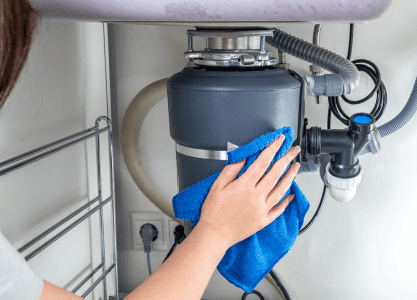
Finally, eco friendly homes are all about reducing waste. From composting organic waste to recycling wherever possible, every effort is made to minimize what ends in the landfill.
The Role of Renewable Energy in Eco-Friendly Homes
Let’s dive deeper into renewable energy. The sun, wind, or the heat from the earth can power homes. While requiring an initial investment, these options pay off in the long run in energy savings and reduce our dependence on fossil fuels.
Energy-Efficiency in Eco-Friendly Homes
Energy-efficient appliances and systems are a cornerstone of an eco friendly home. They perform the same tasks as their traditional counterparts but use significantly less energy.
Sustainable Materials for Eco-Friendly Homes
Building an eco friendly home means making conscious choices about the materials used. This might mean opting for reclaimed wood for your floors or recycled glass for your countertops. The possibilities are endless, and each choice makes a difference.
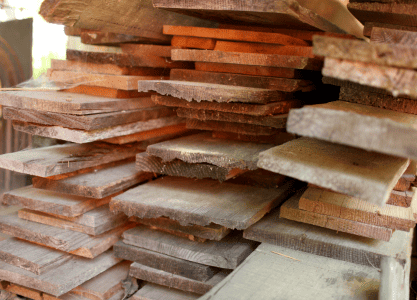
Waste Reduction and Management in Eco-Friendly Homes
In an eco-friendly home, waste management starts with reducing the amount of waste we produce. This could mean adopting a minimalistic lifestyle, composting kitchen scraps, or ensuring we recycle as much as possible.
Case Studies: Successful Eco-Friendly Homes
Around the world, there are some inspiring examples of eco-friendly homes. From self-sufficient houses in the suburbs to green buildings in urban areas, these case studies prove that sustainable living is possible and immensely rewarding.
Making Your Home More Eco-Friendly
Are you interested in making your home more eco-friendly? Start small. Switch to energy-efficient appliances, or install a few solar panels. If you’re building a new home, consider using sustainable materials and incorporating renewable energy sources immediately.

Eco friendly home materials help reduce the environmental impact of construction and provide a healthier living environment. Here are some materials that can be used to build a more sustainable home:
- Bamboo: Bamboo is a rapidly renewable resource that can be used for flooring, furniture, and even structural elements. It’s durable, strong, and grows much faster than hardwoods.
- Recycled Steel: For the structural framework of buildings, recycled steel is an excellent eco-friendly option. It provides the strength of new steel and reduces the energy usage and carbon emissions associated with producing new steel.
- Cork: Cork is a renewable resource that’s great for flooring. It’s harvested from the bark of cork oak trees, which regrows over time, and the trees aren’t cut down during harvesting.
- Reclaimed Wood: Reclaimed or salvaged wood can be repurposed for flooring, beams, doors, and more. It reduces the demand for new timber, thereby reducing deforestation.
- Recycled Glass: Recycled glass can be used for countertops, tiles, and insulation. Using recycled glass reduces the demand for new glass production, which is energy-intensive.
- Hempcrete: Hempcrete is a bio-composite material made from the inner woody core of the hemp plant mixed with lime. It’s an excellent insulator that helps regulate indoor humidity and is more sustainable than traditional concrete.
- Straw Bales: Straw bales can be used to create thick, insulated walls ideal for climates with hot summers and cold winters. Straw is a renewable resource and offers excellent insulation.
- Low-VOC Paints and Finishes: Volatile Organic Compounds (VOCs) found in many traditional paints and finishes can harm indoor air quality. Low-VOC or VOC-free paints and finishes are a healthier, greener alternative.
- Natural Fiber Carpets and Rugs: Carpets and rugs made from natural, renewable fibers like wool, jute, and sisal are more eco-friendly than synthetic options.
- Green Roofs and Walls: Green or living roofs and walls are covered with vegetation, which provides natural insulation, reduces runoff, and helps mitigate the urban heat island effect.
Choosing eco-friendly materials for your home can minimize your environmental footprint, increase energy efficiency, and create a healthier indoor environment.
The most eco friendly home would incorporate a variety of sustainable practices, energy-efficient appliances, and environmentally-friendly materials, including an intelligent thermostat. Here’s a potential blueprint:
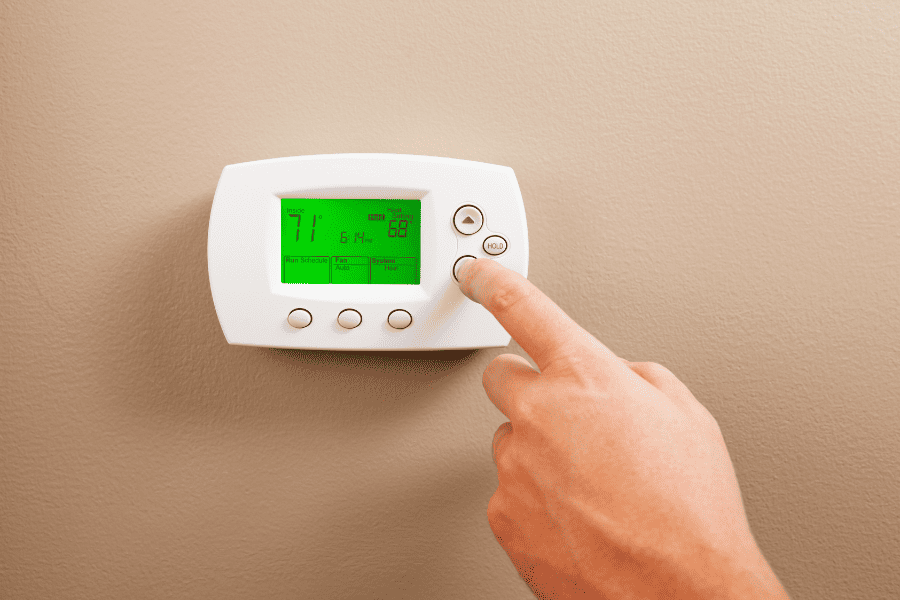
The house would be constructed using sustainable materials such as reclaimed wood, recycled steel, or bio-based insulation materials like hempcrete or straw bales. It could also incorporate green roofs or walls to provide natural insulation and help manage stormwater. Double-glazed windows with low-E coatings could be used to reduce heat loss in winter and heat gain in summer.
Inside, the home would be equipped with Energy Star-rated appliances to minimize energy consumption. This includes high-efficiency HVAC systems, LED or CFL lighting, and low-flow water fixtures. The use of natural materials, like cork or bamboo flooring and low-VOC paints, would enhance indoor air quality.
A smart thermostat would play a central role in managing the home’s energy usage. It would allow the homeowners to control the home’s temperature remotely, adjust settings based on the time of day or occupancy, and even provide detailed energy usage reports. The thermostat could work in harmony with a zoned HVAC system, controlling different areas of the home independently to reduce energy waste.
Solar panels would be installed on the roof to generate renewable energy for the home, reducing reliance on grid power. The inclusion of a solar battery storage system would enable the home to use solar power even when the sun isn’t shining.
Rainwater harvesting systems could collect rain for use in watering plants or flushing toilets, conserving water. A greywater recycling system could further maximize water efficiency by reusing water from sinks and showers for landscape irrigation.
Lastly, the home would incorporate a well-designed landscaping plan with native, drought-tolerant plants to minimize water usage and support local biodiversity.
By integrating these features, this eco-friendly home would minimize its environmental impact, provide a healthy living environment, and offer substantial cost savings in the long term.
What are the costs of an eco-friendly home?
The cost of an eco-friendly home can vary greatly depending on numerous factors such as the location, size of the house, and the specific green technologies or materials used. Here are some of the cost considerations:
- Building Materials: Sustainable building materials like reclaimed wood, recycled steel, or bamboo can sometimes cost more upfront than conventional materials. However, they often offer cost savings over the life of the home due to their durability.
- Energy-Efficient Appliances: Energy-efficient or Energy Star-rated appliances may have a higher purchase price than standard appliances. However, they can reduce energy costs significantly over their lifespan, leading to overall savings.
- Renewable Energy Systems: Installing renewable energy systems, such as solar panels or wind turbines, involves a significant upfront cost. The cost of these systems has been steadily decreasing, and incentives or rebates from federal, state, or local programs can offset some of this cost. Over time, the energy savings and potential for selling excess power back to the grid can outweigh these initial expenses.
- Water Conservation Systems: Implementing water conservation systems like rainwater harvesting or greywater recycling systems also comes with upfront costs. However, they can lead to significant water bill savings, especially in areas with high water rates or during periods of drought.
- Insulation and HVAC Systems: High-quality insulation and efficient HVAC systems can have higher initial costs, but they reduce heating and cooling expenses in the long run.
- Green Certification: If you choose to get your home LEED-certified or meet other green certification standards, there will be associated costs. However, this certification could increase the value of your home.
- Maintenance and Replacement Costs: Eco-friendly homes often have lower maintenance costs due to the durability of materials used. Likewise, the long lifespan of features such as LED lighting and solar panels can reduce replacement costs.
Remember, while the initial costs may be higher, an eco-friendly home often leads to significant savings in energy and water bills over the life of the house. Plus, they may increase in value more than traditionally built homes due to growing demand for sustainable housing.
Conclusion
Eco-friendly homes represent a future where we live in harmony with nature. They’re not just houses; they’re a commitment to sustainable living and a testament to living comfortably without harming our planet.
Ready to embrace the eco-friendly lifestyle? Head to Earth Friendly Items to find resources and products to help you on your journey towards green living.
We’re reader-supported. We may earn an affiliate commission when you buy through links on our site.
References
To delve deeper into eco-friendly living, check out these resources:
- The U.S. Department of Energy’s guide to energy-efficient homes
- The Environmental Protection Agency’s advice on sustainable living
- The National Renewable Energy Laboratory’s research on renewable energy options
- The World Green Building Council’s case studies on eco-friendly buildings
- Earth911’s comprehensive guide on recycling

